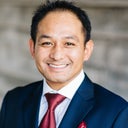Hello! Thank you for your question. It is common for scars to fully mature for up to a year. In the meantime, there are a few things that may help to ameliorate your incision/scar. The most proven (as well as cheapest) modality is simple scar massage. Applying pressure and massaging the well-healed scar has been shown to improve the appearance as it breaks up the scar tissue, hopefully producing the finest scar as possible. Other things that have been shown to add some benefit are silicone sheets, hydration, and topical steroids. In addition, avoidance of direct sunlight to the incision will significantly help the appearance as they tend to discolor with UV light during the healing process. If unsightly scars are still present after approximately a year's time, other things that your surgeon may consider are intralesional steroid injections, laser, or just surgical revision of the scar itself. Hope that this helps! Best wishes for a wonderful result!





